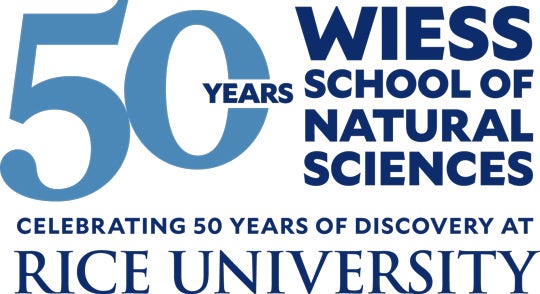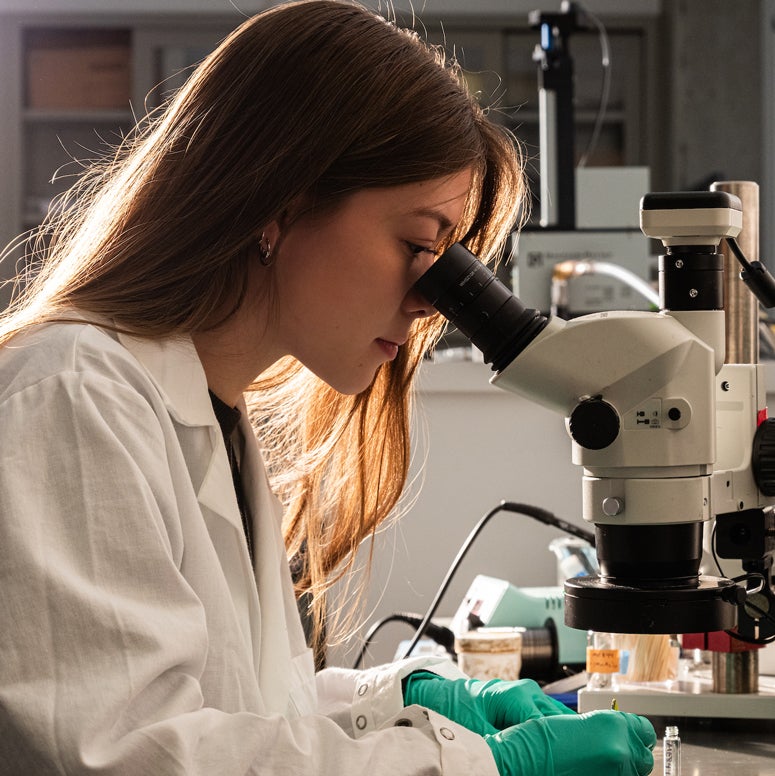
Emma Codianne’s path to a physics major began with an exceptional high school physics teacher and a modern physics course that sparked her curiosity. At Rice, outstanding instruction from professors Mustafa Amin and Ming Yi in her introductory physics courses solidified her interest in the field. A pivotal moment came during a Natural Sciences undergraduate research fair in her first semester when she met Physics and Astronomy professor Emilia Morosan, whose enthusiasm and support set Emma on her research trajectory.
“She was so welcoming and encouraging for underclassmen to get involved with research to figure out what they like,” Emma recalled. At Morosan’s invitation, Emma visited the lab, attended a group meeting, and ultimately joined the team as a freshman. This decision laid the foundation for her four-year research journey in experimental condensed matter physics.
Eager to confirm her passion for the field, Emma explored other areas of physics research through summer internships. “I have tried other projects to make sure this was not just the first thing I found. Trying other branches of physics through summer internships helped me find that I really enjoy experimental condensed matter physics,” she said. Her experiences included contributing to the Super-Kamiokande neutrino detection experiment at the University of Tokyo. Most recently, she worked at SLAC National Accelerator Laboratory on the Heavy Photon Search Experiment, where she developed her programming and simulation skills while investigating dark matter detection.
Back at Rice, Emma’s research in the Morosan group focuses on synthesizing and characterizing novel quantum materials with unique electronic properties. Her primary project centers on Sr₂Mn₃As₂O₂, a material first synthesized by the group a few years ago.

"The compound I am looking at is a Mott insulator — bandgap calculations suggest that it should behave like a conductor, but experimentally it shows insulating behavior,” Emma explained. The discrepancy arises from the material’s strong electron correlations, which are not accounted for in traditional band theory. These same correlations make Sr₂Mn₃As₂O₂ a compelling candidate for studying unconventional superconductivity. By tuning the oxygen content of this Mott insulator, Emma was able to induce a transition from insulating to metallic behavior, a key step toward uncovering new electronic ground states. “Unconventional superconductivity might emerge at the crossover like this between insulating and conductive states,” she noted.

Emma’s involvement spans every step of the research process. “I start with synthesizing the material, carefully measuring out elements to ensure the stoichiometry is correct. Then, I use X-ray diffraction to identify my compound,” she said. “If those steps are successful, I start the fun part: taking measurements to characterize the material’s properties, starting with magnetic properties and electrical transport.”
Her results so far are promising. “I have shown that it was possible to induce a metal-insulator transition in this compound, specifically moving from Mott insulator behavior to metallic behavior by removing some of the oxygen in the compound. I have not found superconductivity yet, but this is a required step in that direction,” Emma said.
Emma is eager to continue her research journey after she graduates in May. She plans to pursue a Ph.D. in experimental condensed matter physics, building on the foundation she has developed at Rice. Emma’s story is not just one of academic success, but also a compelling example of how inspiring mentors and welcoming opportunities can open the door to new discoveries.

